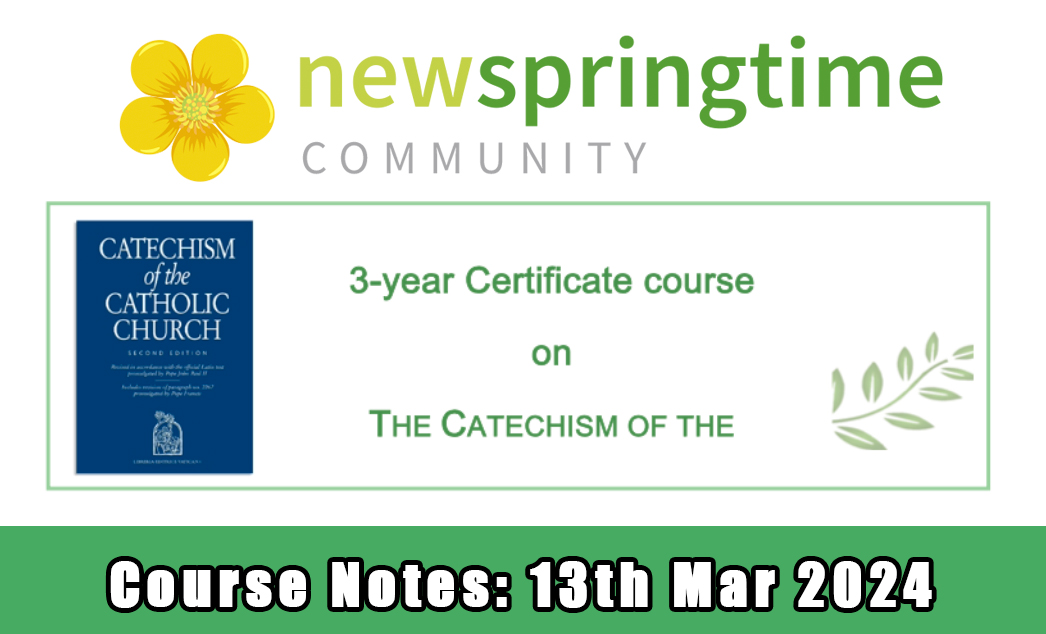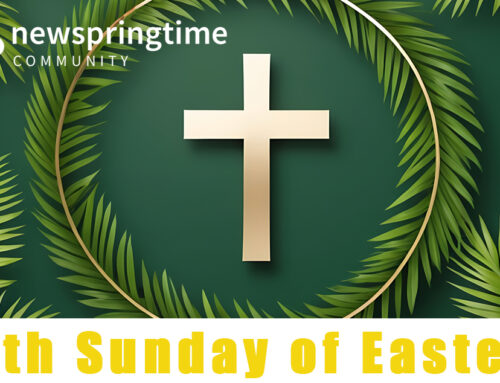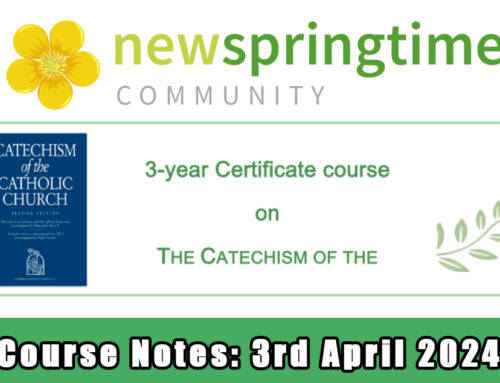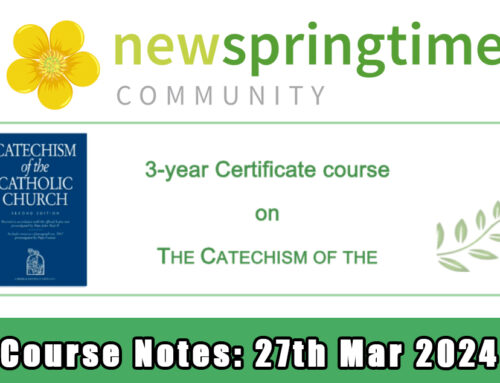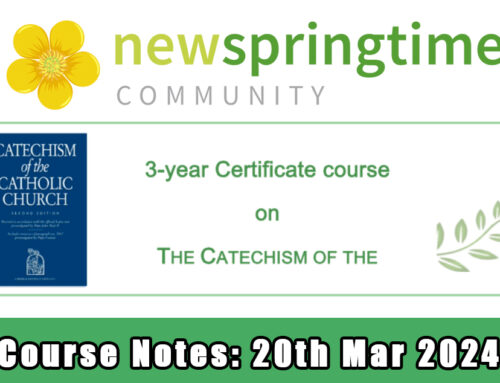The Catechism of the Catholic Church – 13th March 2024
To download The Catechism of the Catholic Church course notes for 13th March 2024, please click here
Commentary no. 21
Our readings this week refer to the call of the Church to evangelise all people. The word evangelisation is a churchy one. It is derived from Greek and means to “preach the good news.” Rather than being mainly Church, doctrine, or morality centered, it is Christ centered. Archbishop Fulton J. Sheen, once commented, “Our Lord’s first word to His disciples was ‘come!’ His last word was ‘go!’ You can’t ‘go’ unless you’ve first ‘come’ to Him.” Whereas the word evangelisation was hardly mentioned in the first Vatican Council in the mid 19th cent it was mentioned many times during the Second Vatican Council. In the years following Pope John Paul II began to talk about the so-called new evangelisation.
In Mission of the Redeemer par. 3 he wrote, “I sense that the moment has come to commit all of the Church’s energies to a new evangelisation and to the mission ad gentes. No believer in Christ, no institution of the Church can avoid this supreme duty: to proclaim Christ to all peoples.”
What does the phrase new evangelisation refer to? While the gospel message is not new, the culture in which it is proclaimed is changing all the time. As a result, Christians have to find innovative ways of communicating the Gospel, esp. to those who have drifted away from Christ and his church. Cardinal Donald Wuerl, Relator General of the 2012 Synod of Bishops said, “At its heart the New Evangelisation is the re-proposing of the encounter with the Risen Lord, his Gospel and his Church to those who no longer find the Church’s message engaging.” It would probably be true to say that the new evangelisation is mainly, though not exclusively, focused on primary evangelisation, i.e., the foundational truths of the faith to do with how the saving merits of the death and resurrection of Jesus who forgives our sins, enables us to experience the presence and power of the Holy Spirit. The new evangelisation enables people to move from knowing about the person of Jesus to knowing him in person. It can be said in passing that Pope Francis has recommended that one very good way of doing this is to run Life in the Spirit Seminars in every parish, convent, school and seminary so that people can be filled with the Spirit and thereby form a deep, personal relationship with Jesus. He has said that he wants every Catholic to experience this baptism in the Spirit. I heard him say in Rome that once people have experienced the outpouring of the Spirit, they need on-going formation in their faith so as to become true disciples of the Lord. There are three main ways of evangelising.
A] Witness of life. In Mission of the Redeemer par 42, St John Paul II wrote, “People today put more trust in witnesses than in teachers, in experience than in teaching, and in life and action than in theories. The witness of a Christian life is the first and irreplaceable form of mission.” This involves such things as holiness of life, living in harmony with others, performing the corporal and spiritual works of mercy, and engaging in liberating action for justice.
B] Verbal proclamation. We evangelise verbally by such things as preaching, catechesis, and one-to-one chats with others. John Paul II said in Mission of the Redeemer par. 20, “Preaching constitutes the church’s first and fundamental way of serving the coming of the kingdom in individuals and in human society.” Lay people can engage in person-to-person evangelisation by talking to family, friends, colleagues and acquaintances about what their faith means to them.
C] Exercise of charisms. St Paul VI maintained that the charisms, such as healing and miracle working, “make the Church fruitful, beautiful and marvellous, and enable it to win the attention and astonishment of the profane and secularized world.” The documentary entitled, Fearless, makes that point most effectively.
The CCC says that evangelisers “must be ready for self-sacrifice, even unto martyrdom.” It is worth mentioning that the earliest extant homily which dates back to the 7th century was about three forms of martyrdom, white (bloodless), a separation from all that one loves; blue (or green), the mortification of one’s will through fasting and penitential labour; and red (bloody), undergoing physical torture or death.

